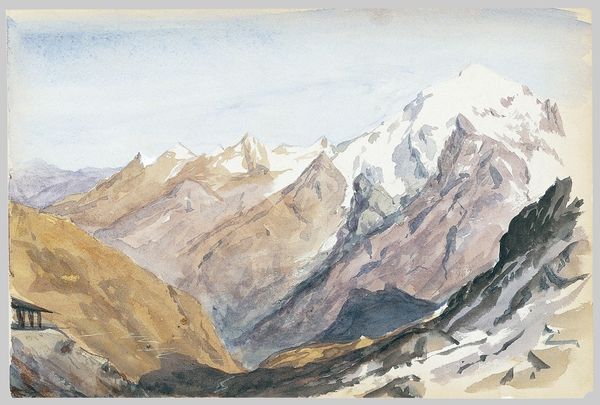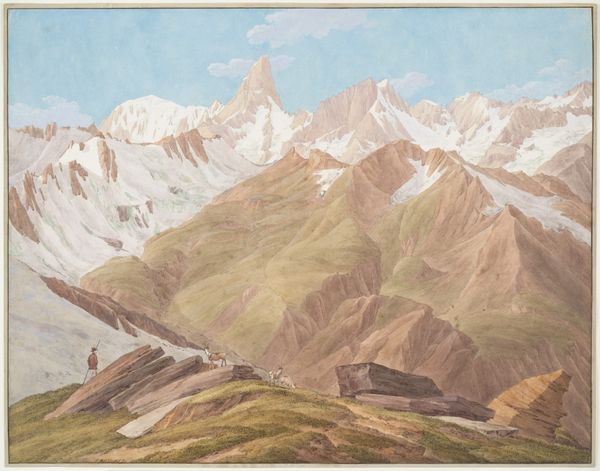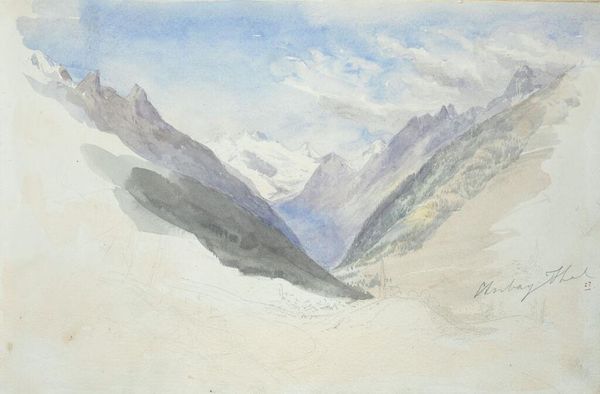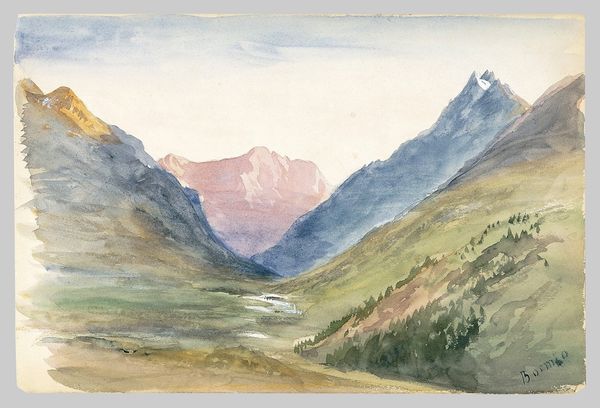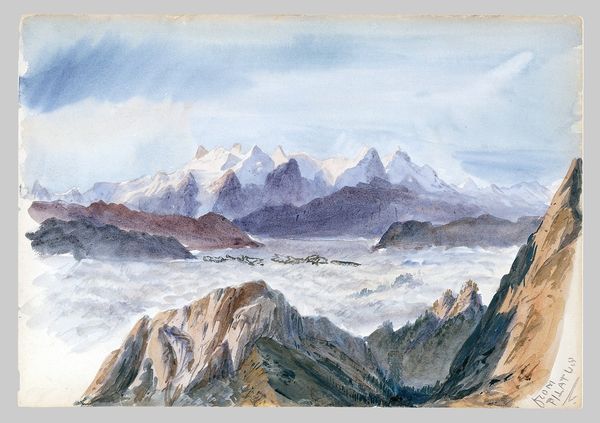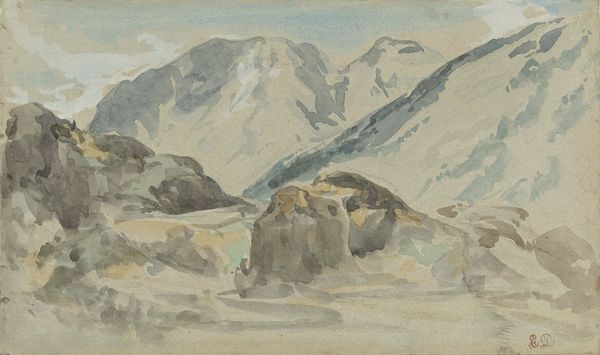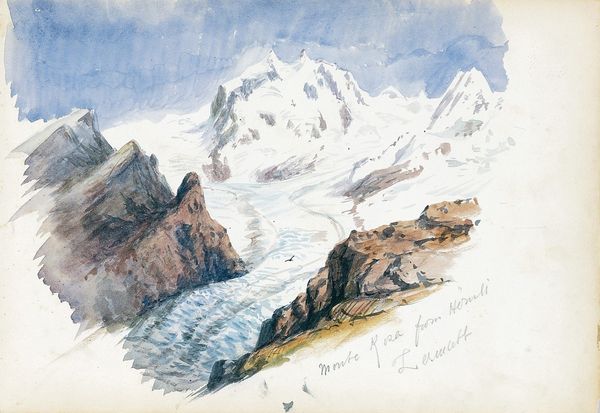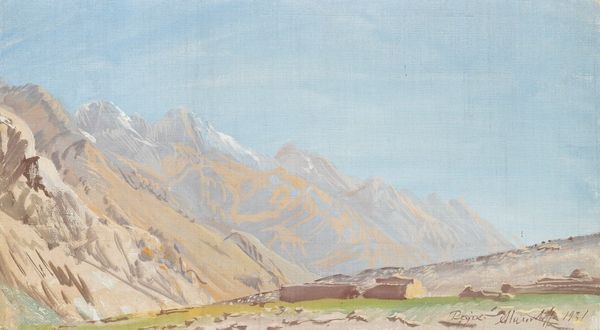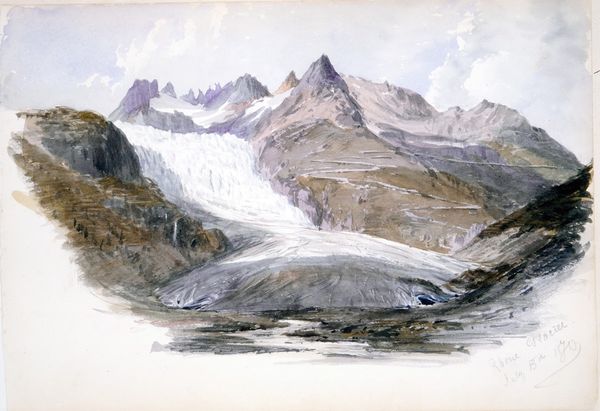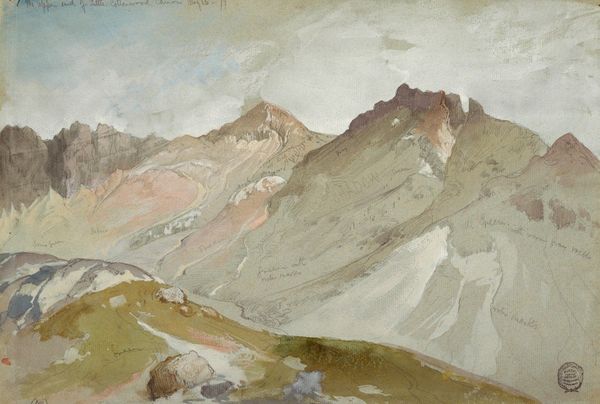
Copyright: Public Domain: Artvee
Editor: Here we have John Singer Sargent’s "Roseg Glacier, Pontresina" from 1869, created using watercolor. The sweeping depiction of the glacier really emphasizes the vastness and powerful forces of nature, while the lone tree in the corner feels almost delicate in comparison. What strikes you about it? Curator: This work provides an interesting insight into the material conditions and processes of landscape painting at the time. Consider the act of plein-air painting itself. What materials were available to Sargent, and how did their portability enable his exploration of this remote site? Watercolor, being lightweight and quick-drying, allowed for a responsiveness to the rapidly changing conditions of the alpine environment. Editor: That makes me think about how different that experience would have been, compared to working from sketches later in a studio! Curator: Precisely. And beyond the immediate act of creation, the painting also hints at the burgeoning tourist industry centered on these sites. How did access to these locations shift the artistic landscape, enabling artists like Sargent, who came from wealth, to experience and represent environments beyond the reach of the working class? The romantic portrayal almost feels in tension with the emerging industry. Editor: I hadn't considered that aspect, but now I see how the availability of materials and access to the location for someone of Sargent’s class significantly shaped this piece. Curator: Indeed. We can consider also, the pigments themselves – where did they originate? Were there labor implications connected to their production and distribution that affected even the seemingly innocent act of painting a landscape? These choices shaped the image, regardless of subject. Editor: So much more goes into even the simplest watercolor than I originally thought! It shifts how I see any artwork now.
Comments
No comments
Be the first to comment and join the conversation on the ultimate creative platform.
